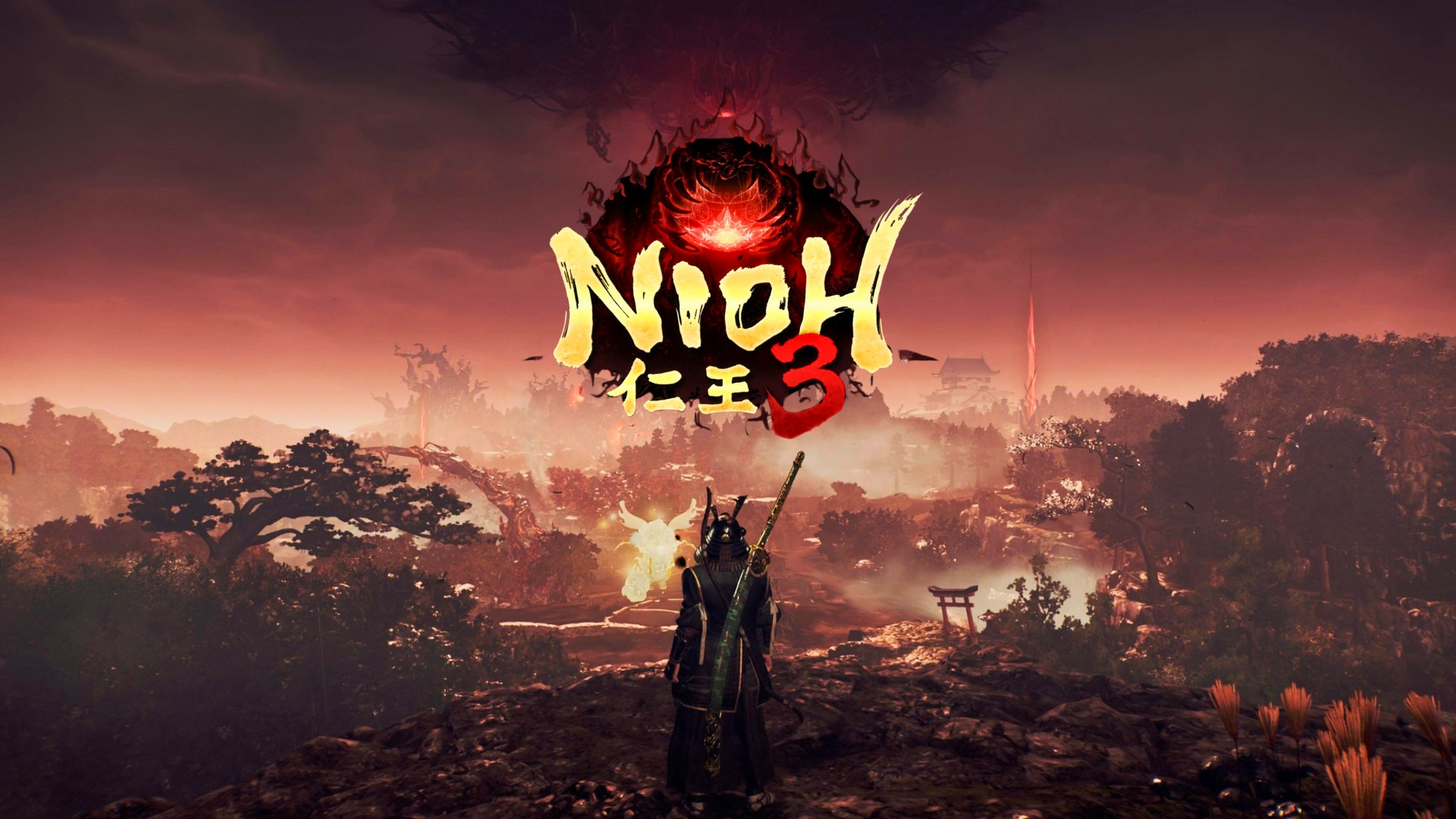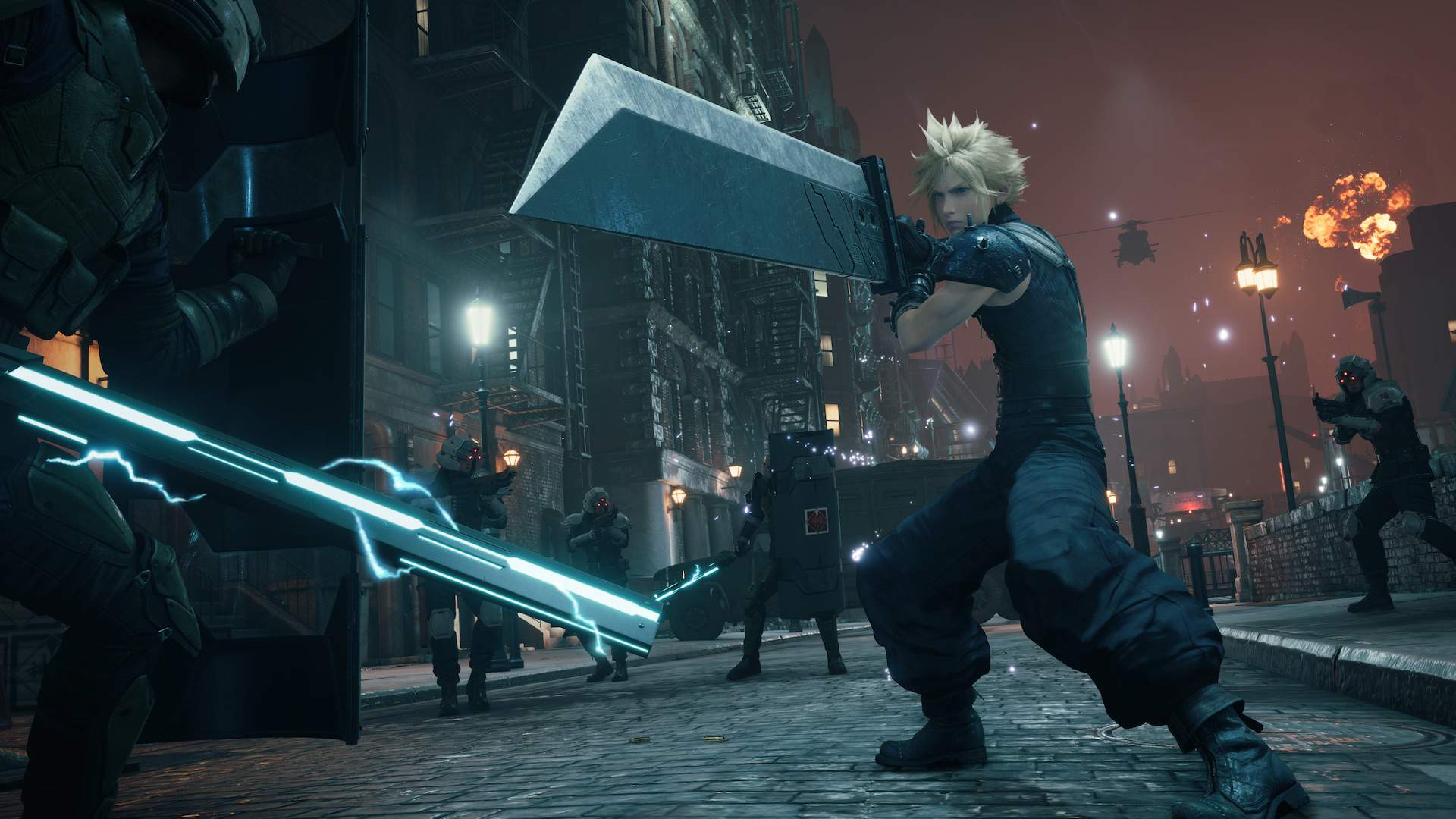Over the past few days, I have had the opportunity to try out S.T.A.L.K.E.R. 2: Heart of Chernobyl on the PlayStation 5 before its official release on November 20th. Throughout my time with S.T.A.L.K.E.R. 2: Heart of Chernobyl, I have spent as much time as I could exploring the unique and haunting world that the game is set in, while attempting to complete all of the different side quests and main quests that I could.
Even though I have progressed through a large portion of the story and S.T.A.L.K.E.R. 2: Heart of Chernobyl has been out for a while now on Xbox and PC, I will still refrain from spoiling any story details for those who are jumping into this experience on PlayStation upon its release.
However, during this review, I will talk about my different experiences within the game, such as the different weapons I acquired during my playthrough, how they felt to use and the various enemies and challenges I came across exploring the zone, and I will touch slightly on the game world and the game’s story.
S.T.A.L.K.E.R. 2: Heart of Chernobyl’s World Is a Dark and Gloomy Place Full of Misery, Death, and Exploration Opportunities
When I loaded into S.T.A.L.K.E.R. 2: Heart of Chernobyl, I was very pleased to see that when I activated the map, it was an incredibly large open world ready for me to explore to my heart’s content after I finished the tutorial section of the game.
For me, this is something that I found really enjoyable regarding S.T.A.L.K.E.R. 2: Heart of Chernobyl, as it allowed me to explore at my own pace without filling the map with millions of markers for me to find and explore.
This was accomplished by the game hiding all of the different exploration points within the map and encouraging me to actually explore the game’s world on my own. Due to this, I was constantly curious about the different locations that I would come across while moving throughout the game world, as I would never know whether they kept secrets or were just decorative unless I searched them.
As with any open-world game, not all the buildings were explorable, and not every building had something to find, even if it was explorable, but for me, that never stopped me from wanting to keep searching, as I never knew whether or not the next building would be holding a game-breaking secret or would be a disappointing dud.
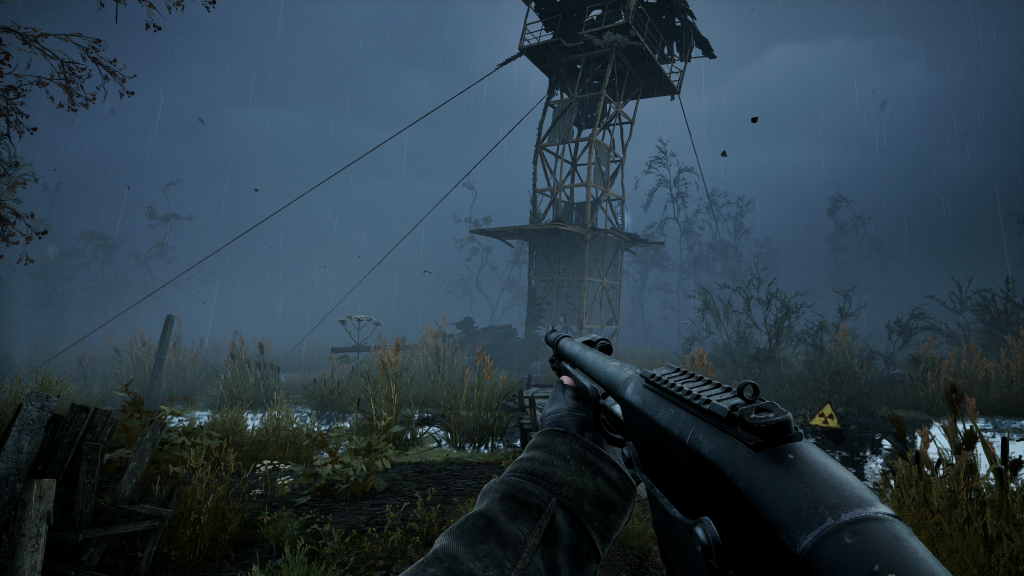
In terms of the game’s overall world, as expected from a S.T.A.L.K.E.R. game, the overall world is incredibly dark both in atmosphere and especially in terms of visuals at night, bringing with it a unique feeling of dread that not many games have implemented in recent years.
Even though I like to consider myself a horror gamer, I felt a small pit in my stomach as I explored the world of S.T.A.L.K.E.R. 2: Heart of Chernobyl, as the dark atmosphere made me feel essentially claustrophobic in a sense, creating an even more intense experience as monsters and people would stalk me in the night.
However, I never found myself wanting to increase the brightness or contrast while playing through the game, as to me, this felt as though it would ruin the experience that the game has clearly been intended to provide to me.
Since I do not want to spoil the later sections of the game’s map for players, I will not describe some of the sections players will be able to explore, but what I will say is that with the addition of this unique atmospheric horror and the rundown and disheveled locations, the game world felt incredibly unique and haunting all at once, which was a big positive.
The Guns Are Incredibly Realistic for the Genre, Even Down to Their Flaws
The biggest issue when it comes to a post-apocalyptic world is managing to maintain the various weapons that you will use as you fight whatever enemies come your way. Whether they be humans or mutants, players need to be able to defend themselves.
Throughout S.T.A.L.K.E.R. 2: Heart of Chernobyl, players will be able to acquire all sorts of weapons to aid them on their journey through the zone, with each weapon being useful in its own way, especially as the player acquires modifications for said weapons.
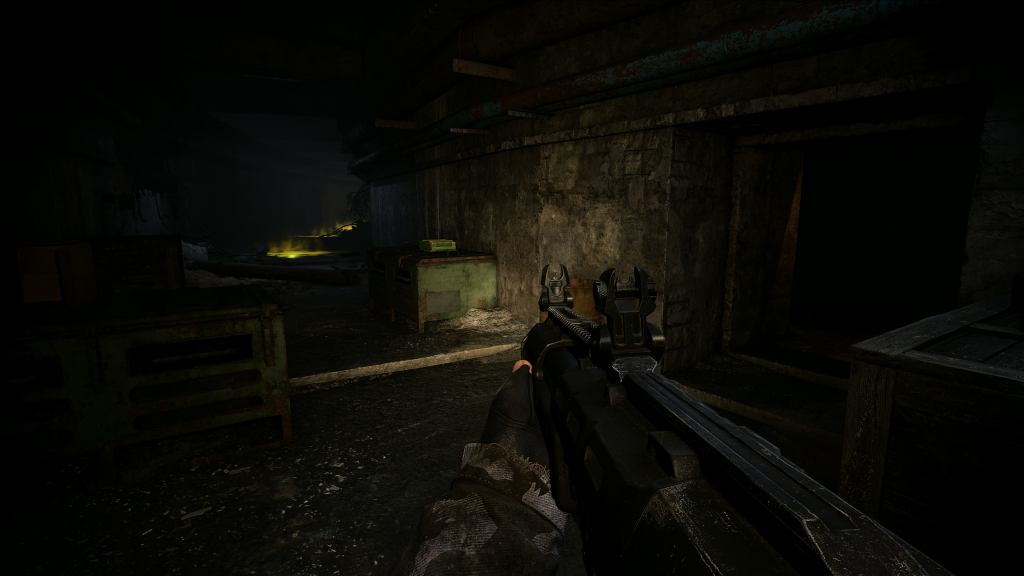
A big part of the weapon system is the durability of each weapon and its effectiveness throughout the game. As with real life, the more you use a weapon, the more wear and tear develops and the worse the gun gets. If you do not take care of your weapon by repairing it, the weapon begins to lose its effectiveness.
This showed itself in a multitude of different ways, but the way that stood out to me was how the gun would jam at random intervals, causing you to stop what you are doing and fix the gun before you could continue your fight. For some, this would be an annoyance, as it puts you in a poor situation when it comes to combat, but for me, this had the opposite effect, as within S.T.A.L.K.E.R. 2: Heart of Chernobyl, combat isn’t always the best option.
For me, this felt like a very good incentive to push players towards finding a less aggressive route through the game world, as a simple gun jam could mean the difference between life and death, and in a game where death comes easily, it is a wiser plan to avoid combat over rushing headfirst into it.
The Humans, Mutants, and Anomalies Are a Force to Be Reckoned With
A key factor to your survival or lack thereof within S.T.A.L.K.E.R. 2: Heart of Chernobyl is the various enemies that you will come across throughout the zone. Whether they be human, mutant, or even an anomaly, there are plenty of threats awaiting the player throughout their journey.
As I have described above, S.T.A.L.K.E.R. 2: Heart of Chernobyl is not a game that players should feel as though they need to rush into combat or a dangerous situation, as the game is not intended to be played this way but is instead intended to test your survival skills as well as your observation skills.
This becomes more evident as you begin to come across the different enemies within the game. During my time with S.T.A.L.K.E.R. 2: Heart of Chernobyl, I began to understand this concept the hard way as I constantly found myself struggling against the harsh conditions of the zone through simple errors and poor decisions, leading to my demise.
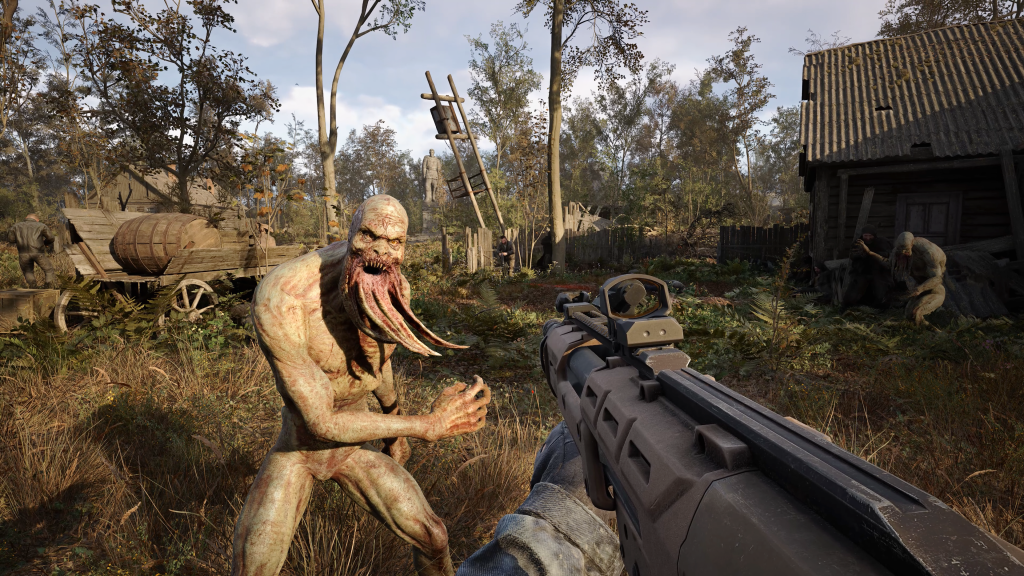
The most common cause of my death was the anomalies that were lurking around the open world, as with each anomaly, there was no margin for error. For each anomaly, if you begin to get too close and trigger said anomaly, the chances of survival are essentially none, as running away is futile, and many of them are instant kills.
However, as much as I started out by stumbling into these unfortunate deaths, I did find myself learning from these mistakes as I slowed down and began to investigate areas a lot more and keep my eyes out for these anomalies before I would trigger them.
But even though these anomalies were the main cause of my death, the enemies were no slouches either. When it came to fighting humans, I found myself struggling to compete in certain situations, especially if the enemy was able to draw their gun first, as you are not designed to be a bullet sponge; however, I did not come across this often, as I would either get the drop on the enemy or avoid combat at all costs.
In terms of the mutants, these were fairly dangerous but manageable depending on the situation. Because I tend to be a hoarder in games like this, I would often enter a combat encounter against a mutant with plenty of medkits, and with some of the earlier mutants hitting rather weakly, they weren’t much of a problem, but as the game progressed, surviving became harder and harder as resources drew thin.
S.T.A.L.K.E.R. 2: Heart of Chernobyl’s Story Is as Grim as One Would Expect
Even though I do not want to touch too much on the game’s story, I do feel that it would be amiss of me not to at least discuss the impact of the early hours of the game’s story.
In any survival game, there is always the idea that part of the game’s story relies on survival and not just finishing the main objective, and S.T.A.L.K.E.R. 2: Heart of Chernobyl is no different, but the main goal of the game looms overhead as you explore the game’s world.

Starting out relatively simple, the player assumes the role of a lone stalker as they enter the zone in an attempt to activate an artifact so that they can sell it and buy a new home for themselves after their original home was destroyed. Unfortunately, disaster strikes, and this unfortunate situation does not work out as the main character is attacked, losing the artifact they want to sell.
After this, the player is then tasked with assisting various factions, both old and new, within the zone while making decisions that will impact the game’s final decision. For me, this was a fun gameplay aspect, as every decision, whether it be small or big, made a difference in the final outcome.
However, along with the game’s main story, many of the side quests were also very intriguing, with many of them providing background information to the zone in question, as well as bringing in new and unique characters that can help put together the rich tapestry that is the story of S.T.A.L.K.E.R. 2: Heart of Chernobyl.
S.T.A.L.K.E.R. 2: Heart of Chernobyl
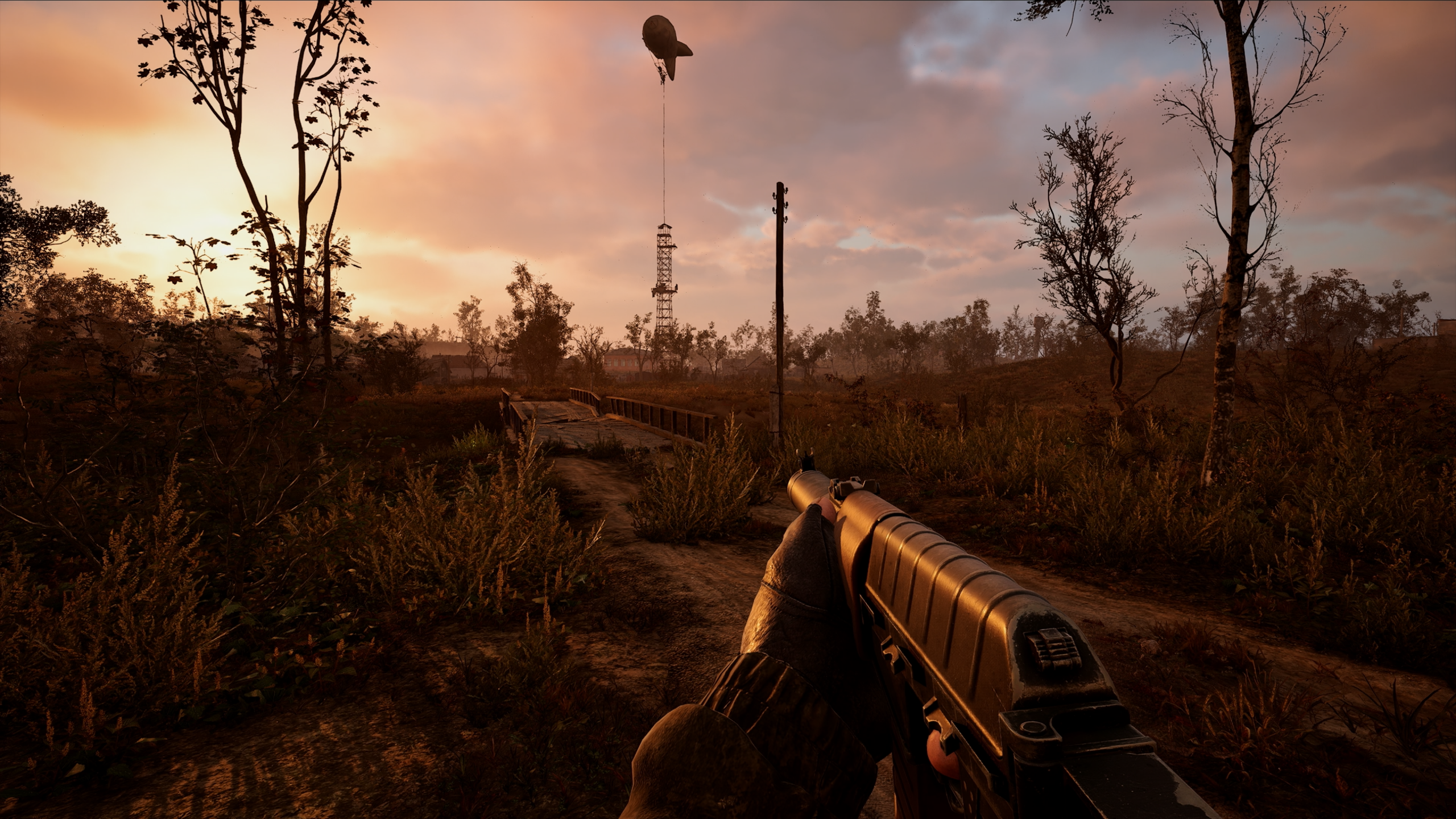
Summary
While playing through S.T.A.L.K.E.R. 2: Heart of Chernobyl, I found that the overall world was incredible with an atmosphere that instilled fear as I progressed, especially at night. Along with plenty of exploration for me to have as I went through all kinds of locations looking for loot.
In terms of weapons, I found that they were very realistic and provided their own challenges to the game’s combat against the tough enemies I would come across. The weapons’ jamming brought a whole new level of fear into the game.
HOURS PLAYED: 15
PLAYED ON: PS5
- The world was huge while also having plenty to explore and do.
- Weapons were incredibly detailed allowing for realistic gameplay.
- The story was gripping as it kept me interested.
- The anomalies were very annoying to start out with, but over time they became easier to handle.
For more Thumb Wars Gaming coverage, check out our interview with the developers behind Daughter of Voodoo, or check out our article talking about a recent statement made by one of the voice actors from Marvel’s Spider-Man.
Liam is a Senior Editor, Writer, and Critic for Thumb Wars and has been working with the team since day one. Liam is a big fan of all things gaming, as you will catch him playing all of the new releases from every genre you can imagine. Whether you find Liam gaming just for fun or spending his free time streaming, you will always find a smile on his face when it comes to all things gaming.


